The next morning we leave the hotel and pass again Phra Prang Sam Yot, the monkey temple. We continue and come along Wat Prang Khaek, Central Thailand’s oldest Wat. It lies on a not very big traffic island. The original Hindu temple was restored in the 17th century.
But actually, we want to visit Narai Ratchaniwet, the palace compound of King Narai. He had built it as his second residence, next to the palace compound of Ayutthaya, in the 17th century. After its death, it was not used anymore and decayed increasingly. King Mongkut restored it only in the 19th century. Today it is a museum.
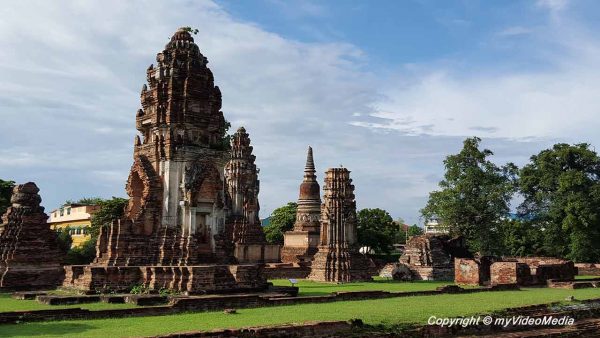
Our problem starts here. It is Monday and Monday, as a rule, the museums are closed in Thailand. Unfortunately, therefore we cannot go to the complex. Instead, we drive on and visit Wat Phra Sri Rattana Mahathat.
Wat Phra Sri Rattan Mahathat
Presumably, it was founded in the 11th or 12th centuries. When King Narai chose Lop Buri as his secondary residence, the Wat was largely dilapidated. But, he had restored all temples in the province, including this one. He also added a large Wihan (main assembly hall) and some chedis to the complex. After his death, the temple was given up again to decay.
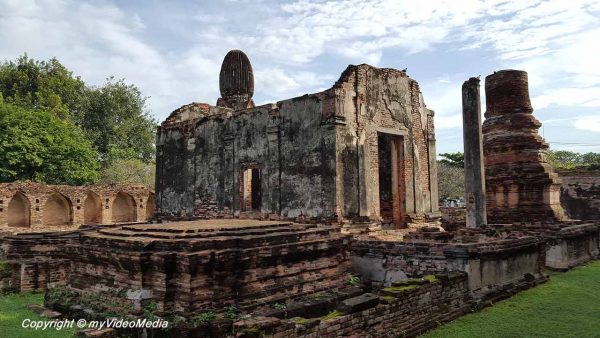
The Wihan stands out due to high windows with pointed portals.
Please watch the 4K UHD video!!!
You are currently viewing a placeholder content from YouTube. To access the actual content, click the button below. Please note that doing so will share data with third-party providers.
One building looks like a Christian church. Narai was very tolerant to missionaries. Yet, he was only interested in the architectural construction of the churches.
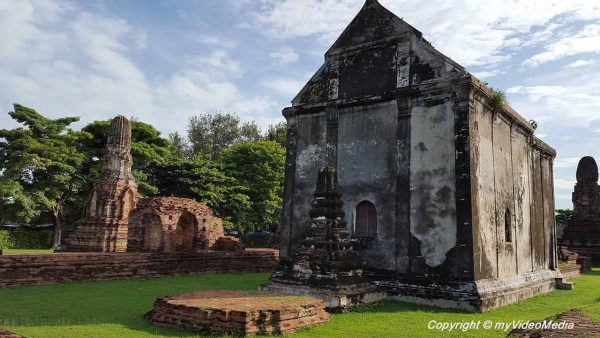
A number of very beautiful reliefs and stucco decorations are scattered on the site.
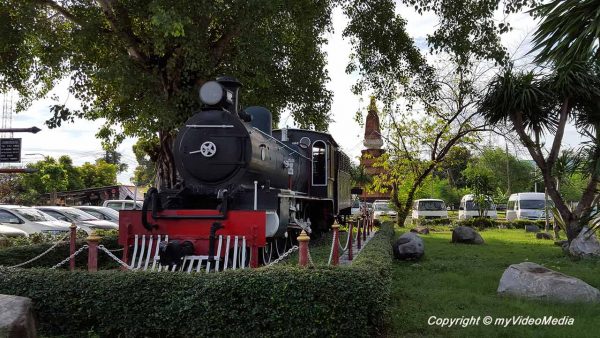
Today, the Wat lies directly at the railway station of the railway line from Bangkok to Chiang Mai. Therefore, an old steam locomotive is exhibited at the square between Wat and Central Station.
Next >>> From Lop Buri to Bangkok
Pin it for later
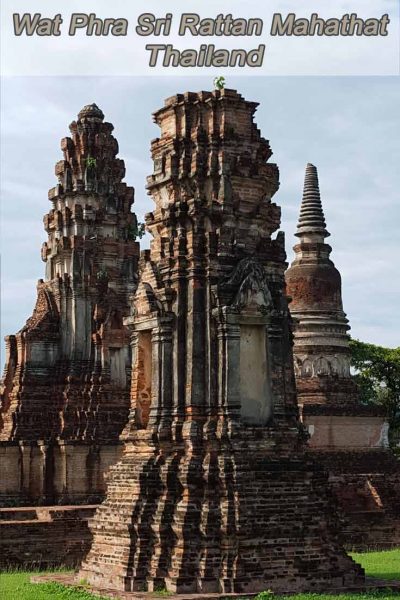
Text, photos and video: Copyright © myVideoMedia